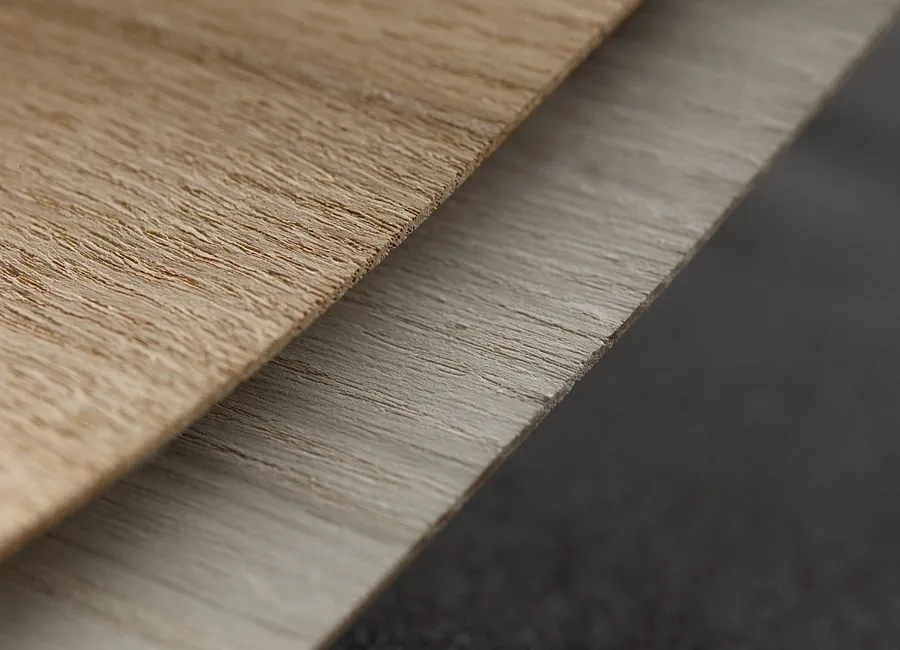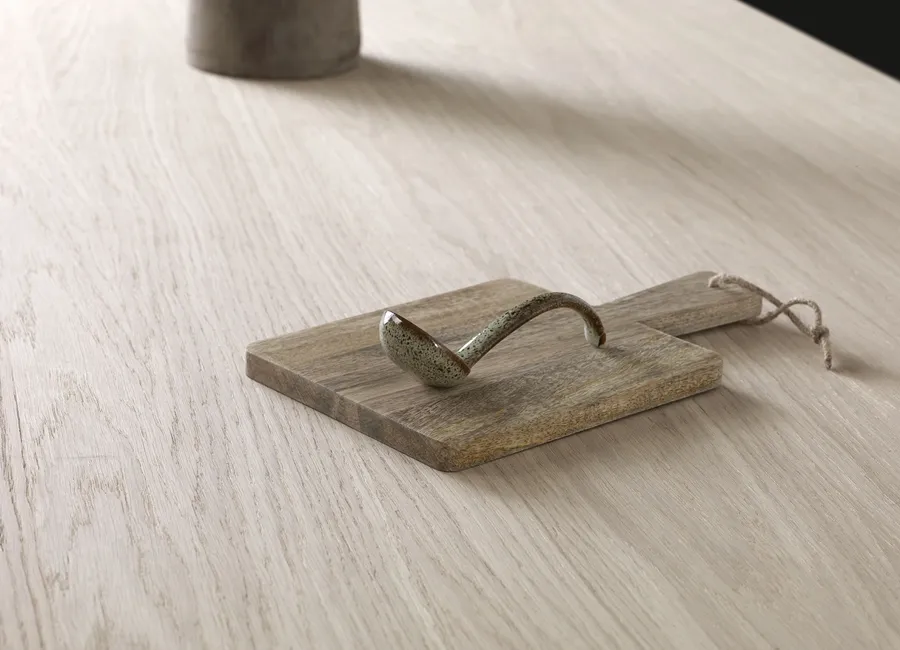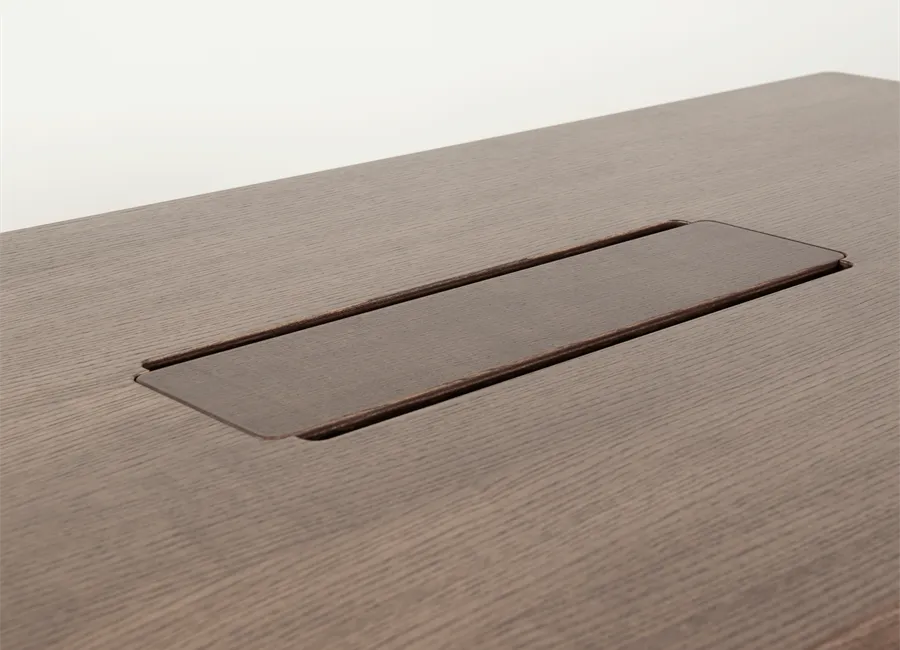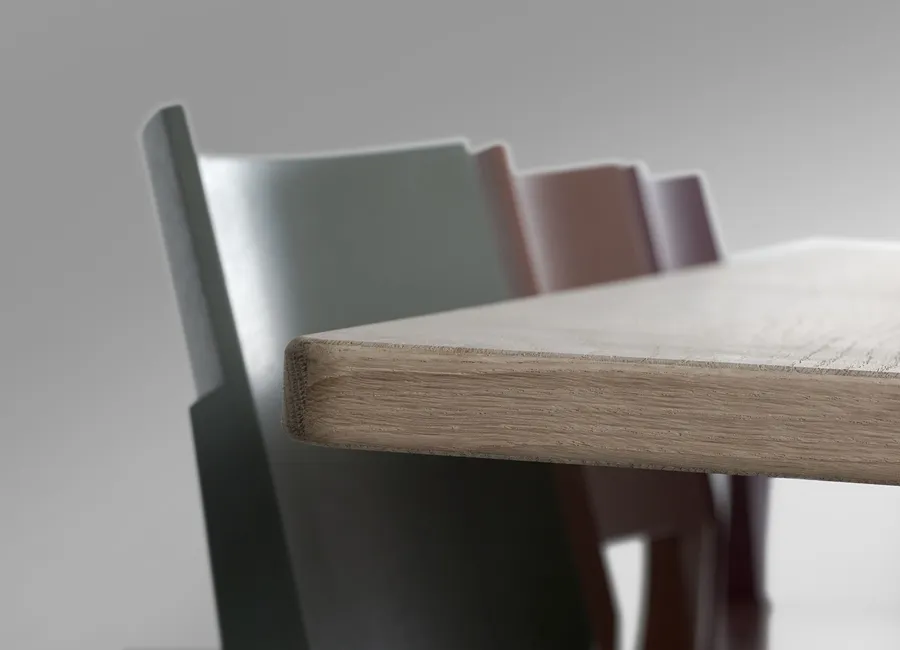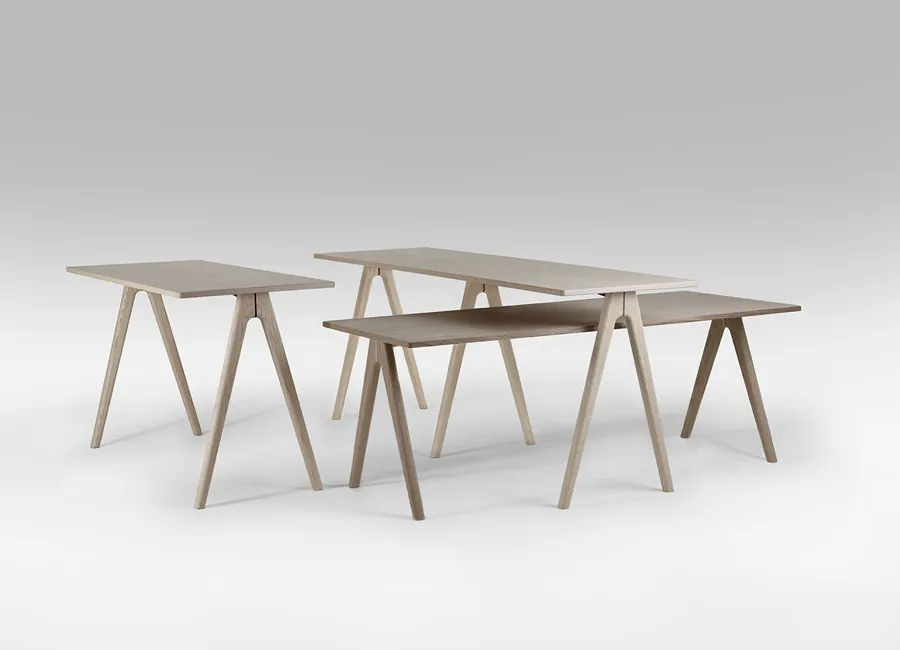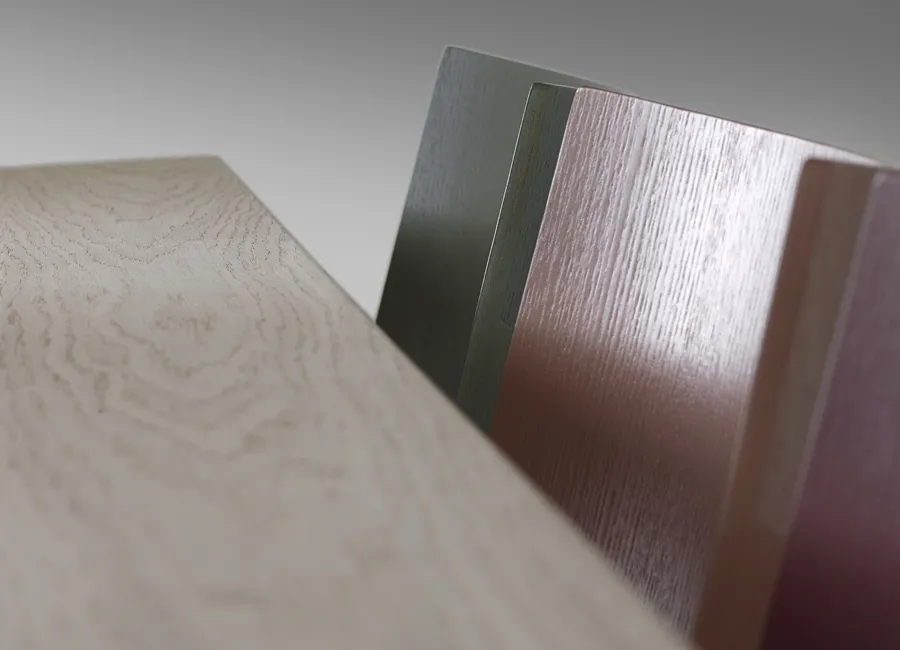All the wood we use comes from responsible forestry
Veneer is a thin sheet of wood called a veneer leaf, how the wood is cut from the log determines the appearance of the veneer. The veneer sheets we use are knife-cut, which means you can see the lines from the tree's growth rings. Our tables are always veneered with 'thick veneer', it is 1.5 mm thick. This makes the tabletop refinishable and simplifies future reconditioning.
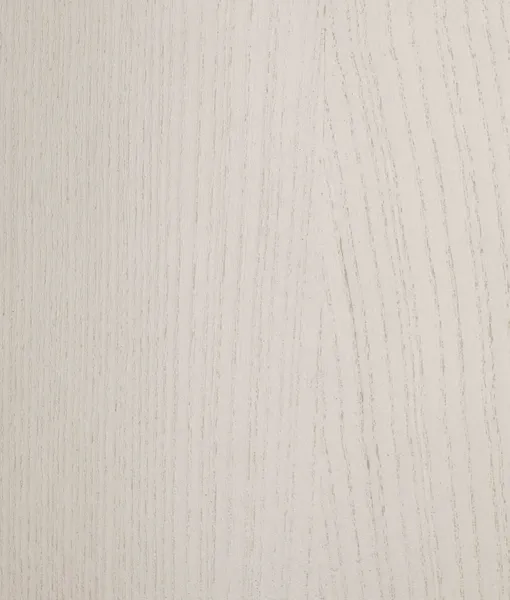
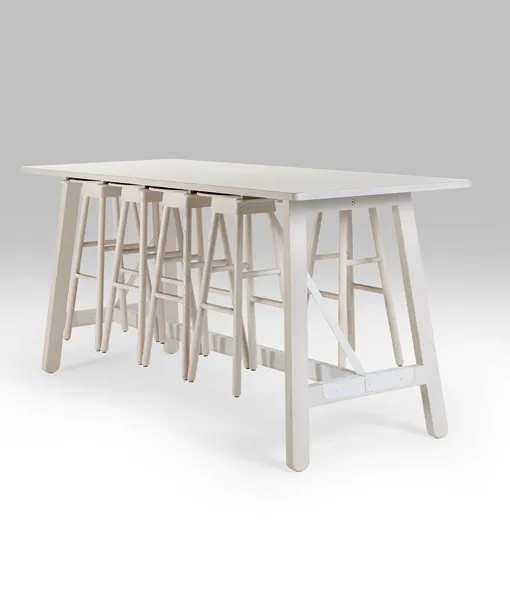
Veneer ∙ White16
White Glazed Ash
A white pigmented lacquer.
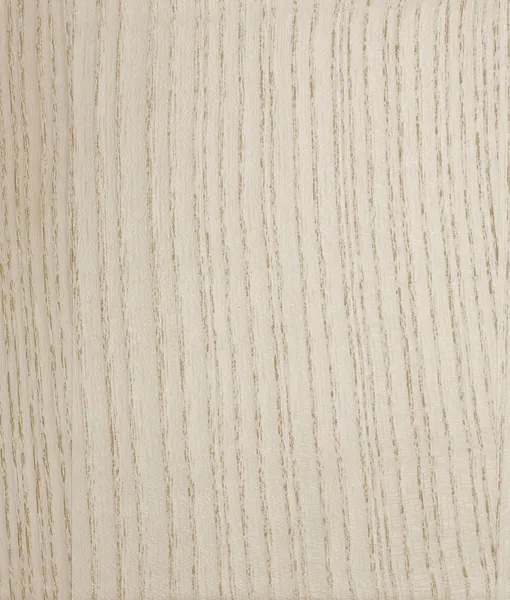

Veneer ∙ No10
Ash lacquer
A clear lacquer with impulses of white pigmentation to preserve the tone of the wood over time and prevent it from yellowing.

Veneer ∙ No10
Birch lacquer
A clear lacquer with impulses of white pigmentation to preserve the tone of the wood over time and prevent it from yellowing.
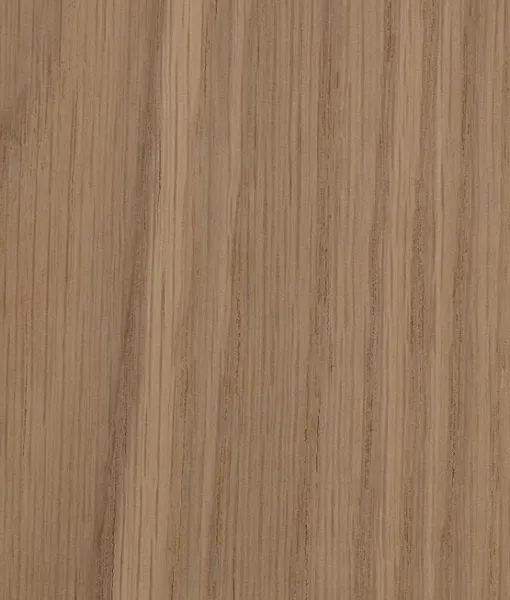

Veneer ∙ No11
Oak lacquer
Clear lacquered oak.
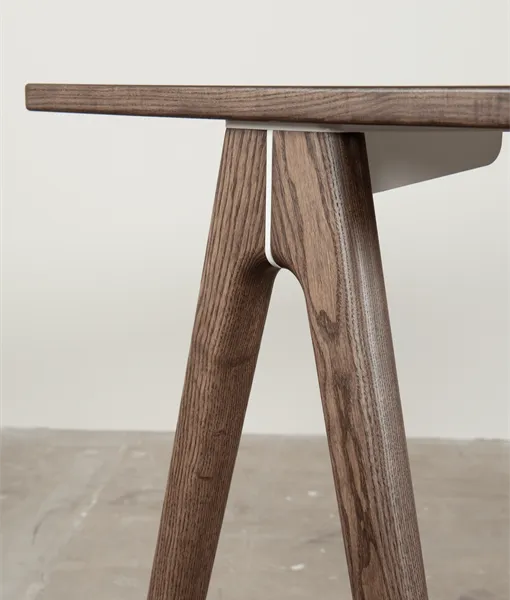

Veneer ∙ 08
Brown nature
A darker finish where the wood grain retains the table's wood feel. This finish is done on ash.
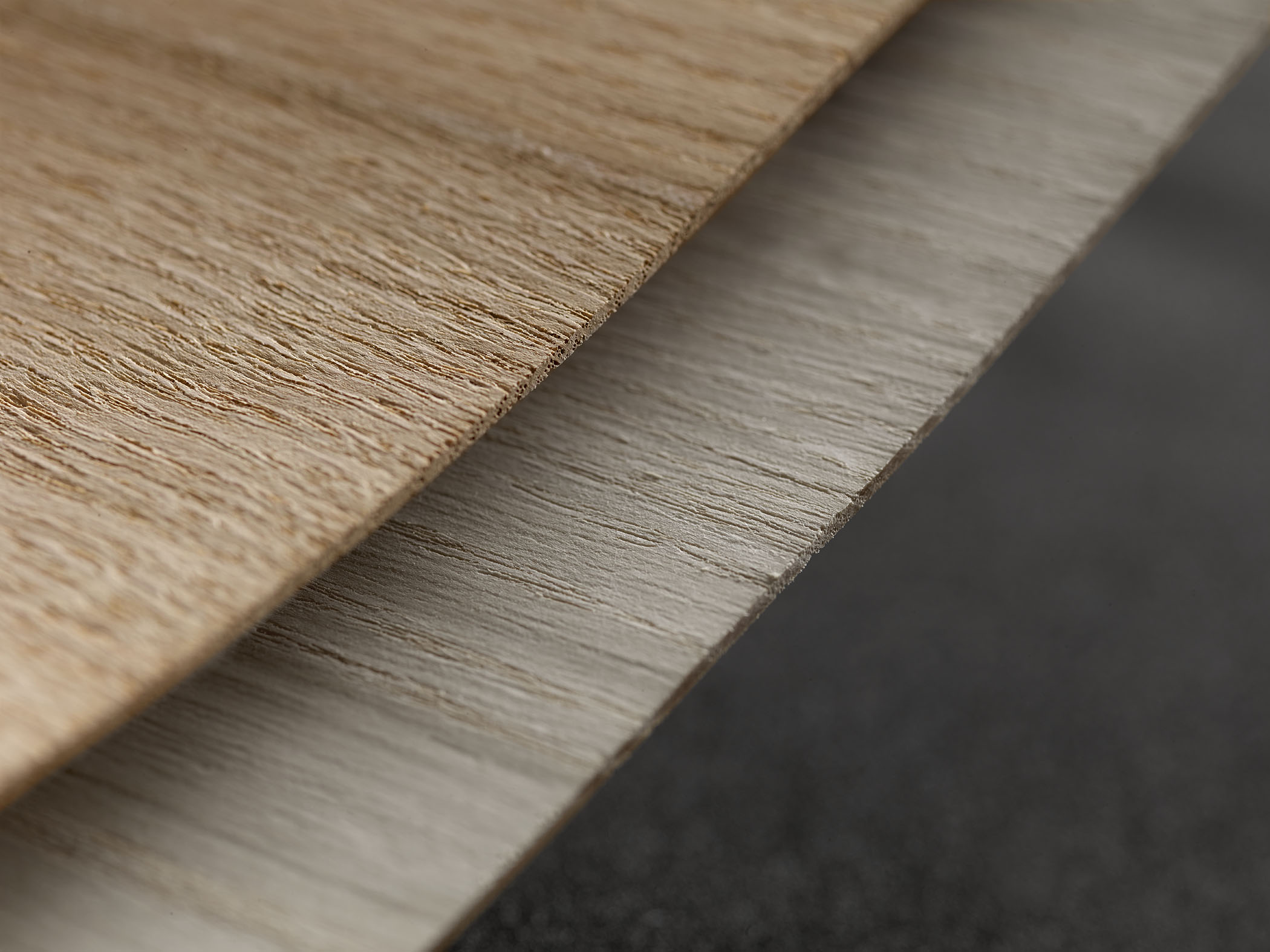
Thickness of 1.5 mm
We exclusively use thick veneer for our tables, which means the veneer has a thickness of 1.5 mm. This allows the tabletop's surface to be sanded multiple times, therefore enabling the reconditioning of the tables. All the wood we use comes from responsible forestry.
Read moreFrequently asked questions & answers about Thick Veneer
Wood veneer is an appreciated material in both public and private interiors – not least for its natural feel, resource-efficient expression, and many design possibilities. Here we answer some common questions that architects often ask when veneer is used in projects, focusing on quality, function, and practical choices.
How does thick veneer differ from traditional veneer, and why choose it in interior projects?
Thick veneer is significantly thicker than traditional veneer (often 1.2–2 mm compared to 0.5–0.7 mm), which provides several advantages. It allows the surface to be sanded and renovated as needed, extending the furniture's lifespan and fitting well in projects with sustainability and long-term aesthetics requirements.
Thick veneer also provides an expression and feel close to solid wood, but with better form stability and resource efficiency. It is a smart choice in environments where you want to combine the warmth of wood with precision and sustainable production requirements.
Is thick veneer available in all types of wood?
We offer standard thick veneer in ash, oak, and birch. For other types of wood, you are welcome to contact us.
How does thick veneer affect the expression of a piece of furniture compared to solid wood?
Thick veneer provides a visual expression very close to solid wood, but with greater form stability and more even structure. Since the surface layer is so thick (often 1.2–2 mm), the wood's natural variations and tactile feel are prominent, while the substrate makes it possible to work with thinner sheets and lighter constructions. It is an excellent alternative when you want to achieve a wood expression with high precision and without the movements that can occur in solid wood over time.
How durable is thick veneer – do I need to be careful?
Thick veneer is significantly more durable than traditional veneer, but it is still sensitive when it comes to impacts, moisture, or intense cleaning. Veneer requires care to maintain its appearance over time.
You do not need to be overly cautious, but avoid, for example, hard impacts, sharp objects, high heat, or letting liquids stay on the surface. The positive is that thick veneer can actually be sanded down, which is not possible with thin veneer or laminate.
In short: you can use it actively in everyday life, but it deserves a bit more care than, for example, laminate – and rewards you with a more natural and lively expression.
Can thick veneer be dyed in a color?
Thick veneer has a rich and vibrant wood structure that requires high precision during processing due to its deep wood fibers – something we at Lundbergs Möbler have extensive experience with. We have chosen not to dye thick veneer in different colors because the deep wood fibers require exact and even absorption in every microscopic detail. Even a minimal deviation in saturation can affect the visual result over time. For us, it is more important to ensure a uniform, protective, and durable surface that holds up technically and aesthetically in the long run.
Through our other surface materials in various colors, we can offer a wide range of expressions – from natural wood to colored surfaces – while maintaining quality and durability.
Do you need dyed veneer for a specific project? Please contact us for further consultation – we are happy to discuss possible solutions based on your needs.
We welcome change that leads to improvement
